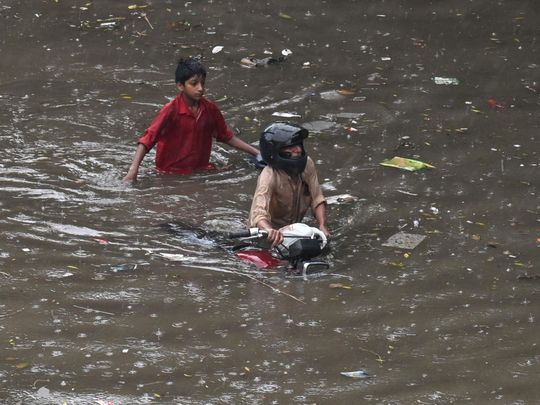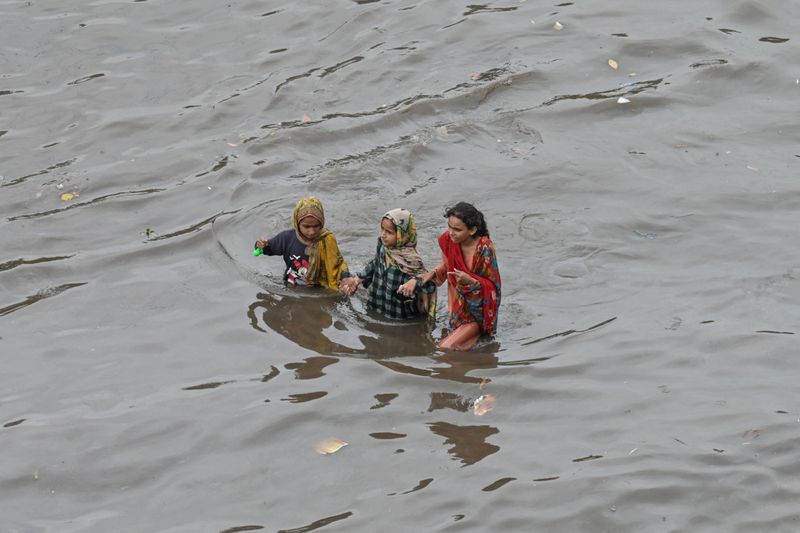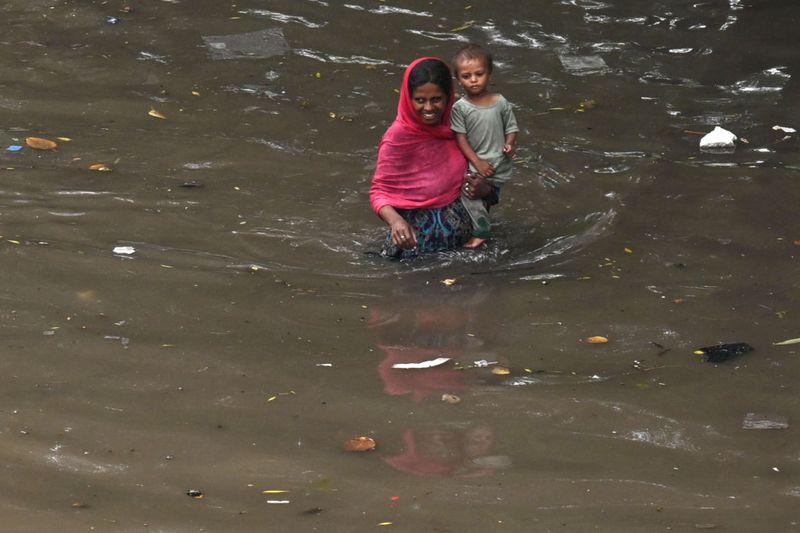
LAHORE: Pakistan’s second-largest city of Lahore was deluged with record-breaking rainfall on Thursday, the national weather agency said, with hospitals flooded, power interrupted and streets submerged in the metropolis home to 13 million.
The eastern city was lashed by almost 360 millimetres of rain in three hours, the Pakistan Meteorological Department (PMD) said, breaking a previous record of 332 millimetres over three hours in July 1980.
“This was record-breaking rainfall,” the agency’s deputy director Farooq Dar told AFP.
The PMD had forecast a wetter-than-usual monsoon season this year in Pakistan, one of the countries experts say is most vulnerable to extreme weather being spurred by climate change.
Over the past three days, 24 people have been killed by rainfall in the country’s mountainous northwestern province of Khyber Pakhtunkhwa, the Provincial Disaster Management Authority said.
In Lahore, one more person was killed by electrocution as a result of the cloudburst on Thursday morning according to local police.

The city’s commissioner declared an emergency and announced offices and schools would be shut for the day.
Two government hospitals in the city near the Indian border reported flooding in their wards, and there were intermittent power outages continuing into the afternoon.
Roads were also submerged, bringing traffic and businesses to a standstill.
Maryam Sharif, the chief minister of eastern Punjab province, said on social media site X that “the entire government machinery is in the field” to drain the water.

The summer monsoon brings to South Asia about 70 to 80 percent of the region’s annual rainfall between June and September.
It is vital for agriculture, but changing weather patterns which scientists attribute to climate change are putting both lives and livelihoods at risk.
Earlier this year Pakistan - which is home to 240 million - was hit by a succession of heatwaves and this April was the wettest since 1961.
At least 143 people died in Pakistan from lightning strikes and other storm-related incidents in April.
In 2022, a third of Pakistan was submerged by unprecedented monsoon rains that displaced millions of people and cost $30 billion, according to a World Bank estimate.












